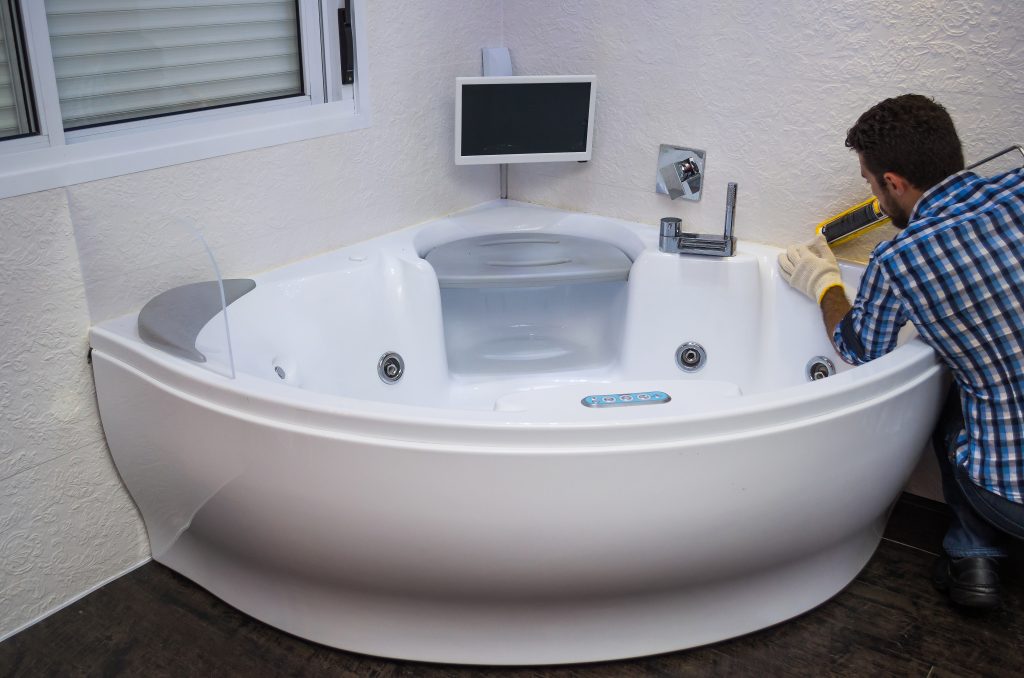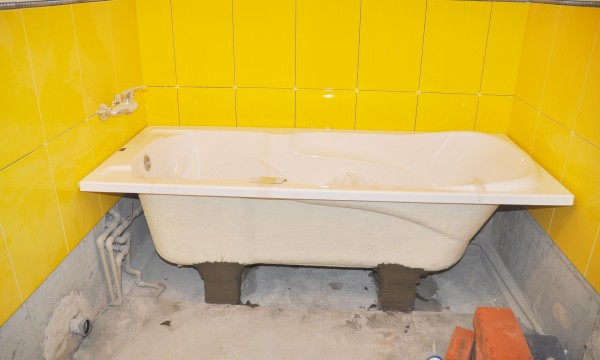They are making a number of great annotation relating to Installing A Bathtub overall in this article directly below.

Mounting a bathtub isn't specifically brain surgery, but it does call for solid plumbing, carpentry, and also in some cases, tiling abilities. Changing an old bath tub with a new one is also a moderately difficult task. If the old tub is readily available, the project can move rapidly; if you need to open a wall surface to get rid of the old bathtub as well as position the brand-new bathtub, the task is a lot harder. In either case, the project is within a home handyman's skills, although you will certainly need a helper to leave the old tub and also embeded in the brand-new one. See to it you have certified on your own for the work and also are comfortable trying it. Instead of working with a specialist to take over a halfway-completed project, it is far better to take into consideration utilizing one prior to you begin. Chances are you may require an expert plumber to make tube links.
This article will assist you set up a new bath tub in your restroom if you have currently gotten a new tub and also do not need to transform the plan of your previous water pipes.
Your devices as well as material checklist ought to comprise the following:
Removing Old Taps
If you need to replace old taps with new ones as a part of your installation, then the first thing you need to do is disconnect the water. After doing so, turn on the taps to drain pipes any type of water remaining in the system. The procedure of eliminating the existing faucets can be rather problematic because of the restricted gain access to that is commonly the instance.
Make use of a container wrench (crowsfoot spanner) or a faucet device to reverse the nut that links the supply pipelines to the faucets. Have a fabric all set for the staying water that will originate from the pipes. When the supply pipelines have been gotten rid of, make use of the same device to loosen up the nut that holds the faucets onto the bath/basin. You will need to quit the solitary faucets from transforming during this process. When the faucets have been gotten rid of, the holes in the bath/basin will certainly need to be cleaned up of any type of old securing substance.
Before going on to fit the new faucets, compare the pipeline links on the old faucets to the brand-new taps. If the old taps are longer than the new faucets, then a shank adapter is required for the new taps to fit.
Fitting New Touches
If the tails of the new faucets are plastic, after that you will certainly need a plastic adapter to avoid damages to the thread. One end of the port fits on the plastic tail of the faucet and the other end gives a connection to the existing supply pipelines.
If you need to fit a monobloc, after that you will need reducing couplers, which links the 10mm pipeline of the monobloc to the basic 15mm supply pipeline.
Next, position the faucet in the placing opening in the bath/basin making sure that the washers remain in area between the tap and the sink. Protect the faucet in place with the producer offered backnut. When the faucet is firmly in place, the supply pipes can be connected to the tails of the taps. The taps can either be connected by using corrugated copper piping or with typical faucet ports. The former type needs to be linked to the tap finishes initially, tightening only by hand. The supply pipes can later be connected to the other end. Tighten up both ends with a spanner after both ends have actually been attached.
Installing the Tub
Utilizing both wood boards under its feet, put the bathtub in the needed placement. The wooden boards are useful in evenly spreading the weight of the bath tub over the location of the boards as opposed to concentrating all the weight onto 4 little factors.
The following goal is to make sure that the bath tub is leveled all round. This can be achieved by checking the level and adjusting the feet on the tub until the spirit level checks out degree.
To install faucets, fit all-time low of the furthest versatile tap connector to the ideal supply pipe by making a compression sign up with; after that do the very same for the other tap.
Turn on the water and also check all joints and brand-new pipework for leaks and tighten them if required. Fill up the bathtub as well as likewise inspect the overflow electrical outlet and the regular outlet for leakages.
Finally, deal with the bathroom paneling as explained in the maker's user's manual. Tiling as well as securing around the bathtub should wait till the tub has actually been used at the very least when as this will certainly settle it right into its final placement.
Getting ready for the Installment
First of all, the sustaining framework provided with the bath needs to be fitted (if required) according to the maker's instructions. Next off, fit the faucets or mixer to the bathtub. When suitable the tap block, it is necessary to make certain that if the faucet comes with a plastic washing machine, it is fitted in between the bathroom and the faucets. On a plastic bath, it is likewise reasonable to fit a supporting plate under the faucets device to stop strain on the bath tub.
Fit the flexible faucet connectors to the bottom of the two faucets making use of 2 nuts as well as olives (occasionally supplied with the bathtub). Fit the plug-hole outlet by smearing mastic filler round the sink electrical outlet opening, and afterwards pass the outlet with the hole in the bathroom. Make use of the nut supplied by the supplier to fit the plug-hole. Take a look at the plug-hole outlet for an inlet on the side for the overflow pipeline.
Next, fit the end of the adaptable overflow pipe to the overflow outlet. Afterwards, screw the pipe to the overflow face which ought to be fitted inside the bathroom. Make sure you utilize every one of the supplied washers.
Attach the catch to the bottom of the waste outlet on the tub by winding the string of the waste outlet with silicone mastic or PTFE tape, as well as screw on the catch to the outlet. Link the bottom of the overflow tube in a comparable manner.The bathroom should now prepare to be suited its final position.
Tiling Around the Tub
In the location where the bathroom meets the tile, it is needed to secure the accompanies a silicone rubber caulking. This is important as the fitting can move enough to break a stiff seal, creating the water to permeate the wall between the bath and also the tiling, leading to problems with moisture as well as feasible leaks to the ceiling listed below.
You can select from a selection of coloured sealants to assimilate your fixtures and also fittings. They are offered in tubes and also cartridges, as well as can sealing spaces approximately a width of 3mm (1/8 inch). If you have a larger space to load, you can fill it with spins of drenched newspaper or soft rope. Remember to constantly load the tub with water prior to sealing, to allow for the motion experienced when the tub remains in use. The sealant can break rather very early if you do not take into consideration this movement before securing.
Conversely, ceramic coving or quadrant ceramic tiles can be made use of to edge the bath or shower tray. Plastic strips of coving, which are easy to use as well as cut to dimension, are additionally conveniently available on the marketplace. It is advisable to fit the floor tiles making use of waterproof or waterproof adhesive and grout.
Bathtub Installation
How Important Is A Bathtub To Your Home?
High-quality baths, showers, and other bathroom updates are necessary when considering a smart investment in your home. It’s a room that you go to every day and one that is constantly being used by guests.The bathroom is one of the top trafficked rooms in a home and also one of the most valuable in terms of home resale.
Install Piping Before Tub
You will be using your existing drain and waste vent system, but pipes required include the hot and cold water supply lines and a pipe leading to a shower head. A mixing valve and shower head are also needed. Air chambers may be required.
Position the Tub
Lower the tub into place so that the continuous flange fits against the wall studs and rests on 1’x4' or 2’x4' supports. Anchor the tub to the enclosure with nails or screws inserted through the flanges into the studs.
NOTE: Remember, bathtubs and shower stalls may require support framing. A bathtub filled with water is extremely heavy, so check building codes and framing support before installing the tub.
Assemble Drain Connections
Assemble the bathtub drain connections by connecting the tub overflow with the tub drain above the trap, not beyond it. The trap will have a compression fitting that screws over the arm of the overflow assembly.
Place a Pipe For the Shower Head
First, locate a brass female threaded winged fitting and attach it to a framing support via a screw or a nail. Then run a pipe up the wall for the shower head. Sweat or solder the other side of the brass fitting to the top of the pipe.
Attaching Hot and Cold Water Lines
Attach your water lines for both hot and cold by sweating these directly into the hot and cold ports of the mixing valve. The mixing valve will be how water enters the tub’s system, not by the pipes themselves.
Install the Spout
Extend a piece of 1/2 inch pipe, or whichever length is specified in the manufacturer’s instructions, for the tub spout. Sweat on a male threaded fitting at the end of the pipe or use a brass nipple of the proper length and a 1/2 inch cap.
NOTE: At this point you should have your rough-in plumbing work inspected before proceeding further.
Check For Leaks
Restore the water pressure and check the drain connection and the supply pipes for any sign of leaking.
estore the Bathroom Wall
Replace the wall with moisture-resistant drywall as a base for your wall covering. Seal the joints between the wall and your new tub with silicone caulk as protection against water seepage.
https://www.berkeys.com/2016/12/02/bathtub-installation-dallas/

As an enthusiastic person who reads about A Step-by-Step Guide to Installing a Bathtub, I imagined sharing that piece of content was smart. Appreciated our posting? Please share it. Help other people locate it. I praise you for your time. Don't hesitate to come visit our site back soon.
Book With Us Today!